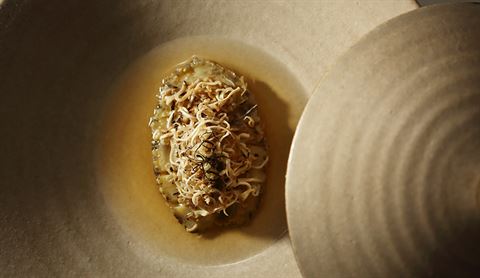CHEF CONCIERGE • November 2019
Judy Joo’s foodie guide to Seoul
The Korean-American celebrity chef and author Judy Joo is a regular on the Seoul culinary circuit. Ahead of her new cookbook release, Korean Soul Food, here she shares her insider guide to the Korean capital’s food scene with travel journalist, Ianthe Butt
Breakfast spot worth getting up early for
I’ll go to Itaewon, where there are more western restaurants. Seoul’s latest craze is bakeries, bread and pastries, which aren’t traditionally Korean. The Baker’s Table has become a bit of an institution; I love its egg sandwiches. Another option is Isaac Toast, a brand that has taken the country (and all of Asia) by storm with its street food-style toast. There are lots of branches, including one in Myeongdong, and they do toast filled with tons of things – grilled beef and egg, bacon, chicken. Incredibly tasty.
Best for brunch
Brunch is big here. While you can head to one of the luxe hotels for a buffet, a smaller place I adore is The Royal Food and Drink, which has a cult following. It’s up on the hill in Haebangchon and the tables at the back have amazing views of Old Seoul neighbourhoods. The Bloody Marys and Irish coffees are excellent and everything on the menu is healthy, light and fresh.
A must-try savoury dish
Definitely budae jjigae, an army barracks stew. It was invented during the Korean war and is made from all the old army rations, so spam, baked beans, American cheese and hot dogs, mixed with ramen noodles in a huge bubbling type of cauldron with a hot, spicy sauce. It sounds disgusting and has almost everything in it but the kitchen sink, but it’s delicious. It was invented out of necessity, now people eat it because they love it. Try it at Ulimjeong, close to City Hall – the restaurant been around a long time and is hard to find, but worth the effort.

Where to impress on a date
Bicena is a Michelin-starred restaurant and does traditional Korean food in a very elevated way. It’s on the 81st floor of the Signiel Seoul Hotel, and your ears pop when you head up there in the elevator, but it’s gorgeous – you can see all of Seoul from the huge windows (pictured above) and every single plate is beautiful. From the seasonal menu you can choose your own type of rice, and try different ages of soy sauce. Each time you go there’s something different.
Unmissable dessert
Korea’s most famous sweet dish is patbingsu, a shaved ice dessert. The ice is usually flavoured – anything from mango to strawberry or green tea – and toppings include sweet red beans, sweet rice cakes, condensed milk and fruit, nuts and Pocky sticks. It’s a bit like a sundae. The green tea flavour is very popular. I like the ones served at dessert café Homilbat in the Seodaemun-gu district.
Best for grab-and-go street food
Kwangjang Market is one of the oldest markets in the city and particularly good for traditional food. Think bibimbap (rice bowls), tteokbokki (spicy rice cakes), mungbean pancakes and mayak gimbap, aka addictive rice rolls. Mayak actually means narcotic, but there aren’t any illicit substances in them; they’re made with roasted salted seaweed and rice, and you won’t be able to stop eating. The vendors here are always shouting at you to ‘Come here’ or ‘Try this’, so the whole experience is theatrical.

Most innovative meal
Three-Michelin-starred restaurant Gaon is something special. The food here showcases grounded-in-tradition Korean ingredients in a contemporary way. Twelve-course set menus are served in private dining rooms and everything that comes to the table, from snow crab to abalone (pictured above) or richly marbled Hanwoo beef (the Korean equivalent of Wagyu), is beautifully presented and to-die-for delicious.
Foodie souvenir to take home
Firstly, beautiful ceramics. Korea is famed for its light green celadon ceramics and my favourite shop to buy them at is KwangJuYo. The other thing worth picking up is dried Korean ginseng – it’s like the holy grail of herbs and I use it in everything from soups to ginseng tea. You’ll find it at most supermarkets, or the Gyeongdong medicine market. This place is a real Mecca for all kinds of roots, barks, leaves and herbs.
Judy Joo’s new cookbook, Korean Soul Food: Authentic dishes and modern twists, is available to buy here
This article has been tagged Food + Drink, Destination
More from previous issues

A geek’s guide to British Airways
With 100 years beneath its wings, British Airways is a treasure trove of aviation tales. The Club's editor clues us in

The Guru
Making sure you enjoy an ethical holiday experience, British Airways Holidays announces a crucial new partnership with wildlife warriors, Born Free. Its managing director tells us more

The best of BA news
Virtual reality headsets elevate entertainment in First; a dedicated customer care team is launched for customers with additional needs, plus new plans for cleaner fuel are hatched

Five golden Avios rules from The Points Guy
Living the high life: Brian Kelly, founder of the Points Guy, knows how to play the Avios game. Here, he clues us in on the rules he travels by
